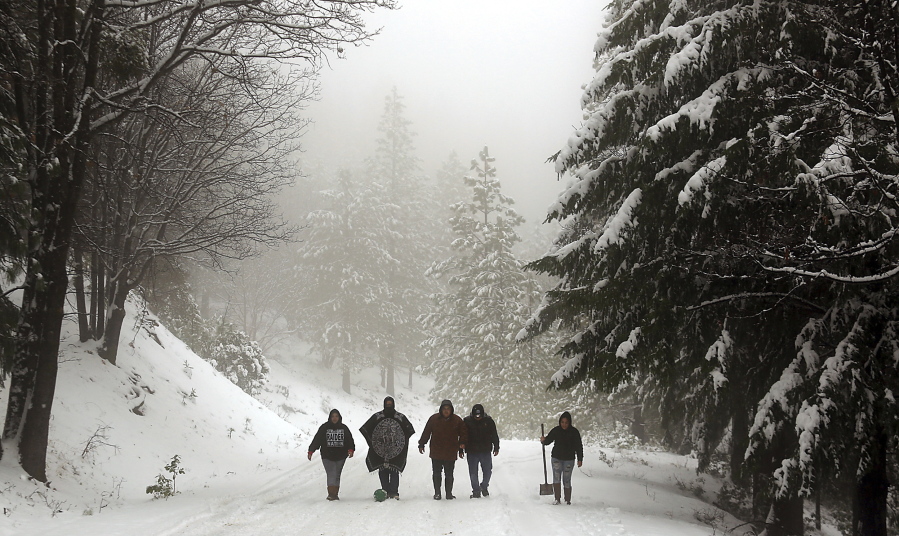PHILLIPS STATION, Calif. — The first manual survey this year of California’s snowpack revealed Tuesday that it holds about half as much water as normal, casting a shadow on the state that’s hoping to dodge a sixth straight year of drought, officials said.
Surveyors, however, took the reading at 6,000 feet near Lake Tahoe in the Sierra Nevada as major cold and windy storms were expected to dump 4 to 5 feet of snow through Thursday in areas above 4,500 feet in Northern and Central California, while mountain areas below that could get 2 to 3 feet, forecasters said.
The storms should boost the snowpack that provides roughly a third of California’s water in normal years for drinking, farming and wildlife when it melts in warm, dry months.
What surveyors find between now and April 1 will guide state water officials in managing the water supply of the nation’s most populous, agriculture-rich state.
Electronic monitors at elevations throughout the Sierra in late December showed the overall snowpack had a water content of 72 percent.
At Tuesday’s reading at Phillips Station, the water content measured at 53 percent of normal, said Frank Gehrke, chief snow surveyor at the state Department of Water Resources.
Gehrke said the level “seems a little gloomy” as the state tries to avoid another year of drought. But he also called it a good start because higher elevations were showing a deeper snowpack.
Gehrke also pointed out that the survey was taken at an elevation below the snowline for December’s storms.
A year ago, the snowpack was slightly above normal levels, but Gehrke recalled that the rain and snow essentially stopped in February and March, leaving the state at a nearly average year for precipitation on April 1.
“This year, it looks like (storms are) lined up off the coast and will continue to increase the snowpack,” he said as he stood on about 3 feet of snow.
Elsewhere, rain was falling Tuesday in the San Francisco Bay Area. Winter storm advisories will go into effect from 4 a.m. today until 4 a.m. Thursday, said Bob Benjamin, a National Weather Service forecaster.
Avalanche alerts were issued for high elevations and flooding was possible in the foothills.
A second, stronger storm system was expected to hit the region over the weekend, bringing the possibility of as much as 5 additional feet of snow in the Sierra Nevada.
“It looks like it’s going to be wet all week, and possibly into next week,” Benjamin said.
Southern California, which has remained relatively dry in recent months, was expected to see light showers this week, forecasters said.
At the height of the drought in 2015, snowpack surveyors stood on a dirt patch for the April 1 measurement at Phillips Station, finding the least snow since records had been taken in more than 50 years.
Gov. Jerry Brown responded by ordering residents statewide to use 25 percent less water, letting lawns turn brown — or tearing them out — and flushing toilets less often.
The drought eased last year and so did regulations.
In February, the state water board will again consider the conditions and decide whether the state needs to take a stronger stand on conservation.



